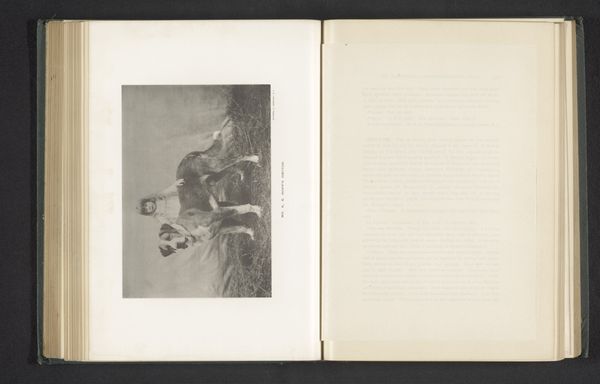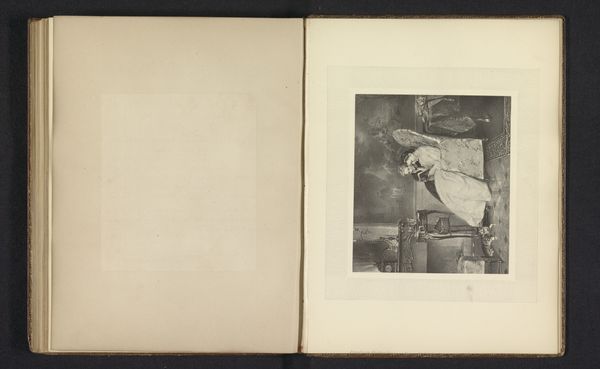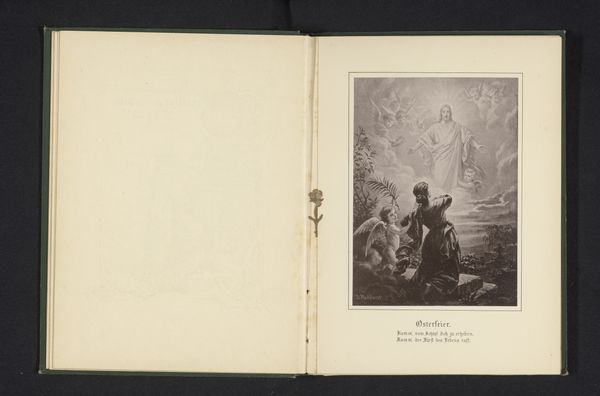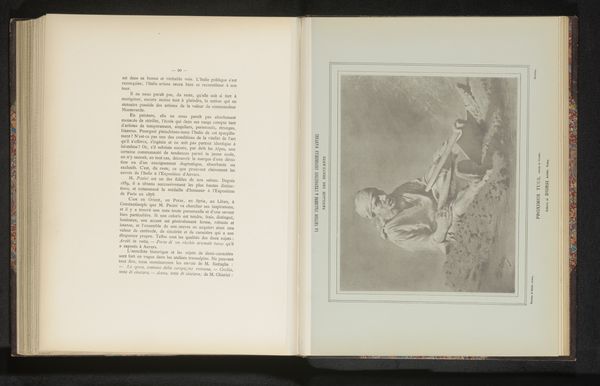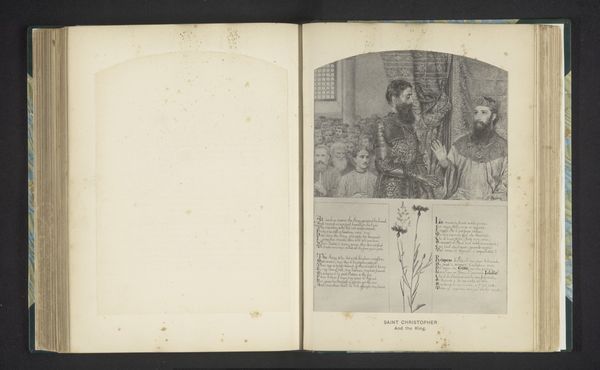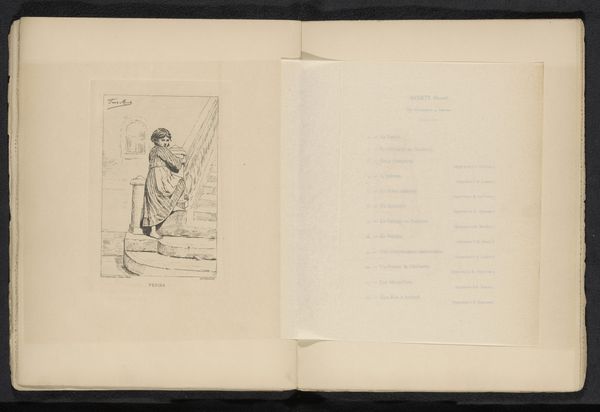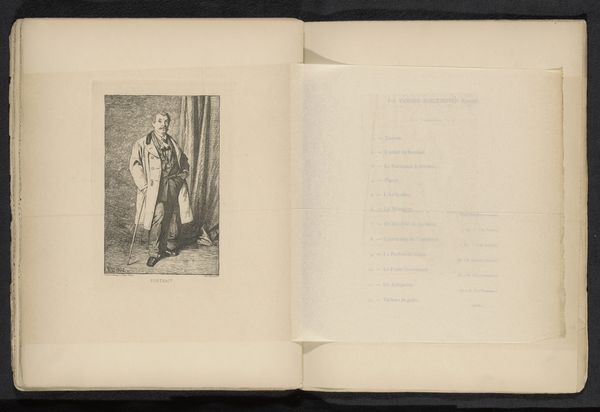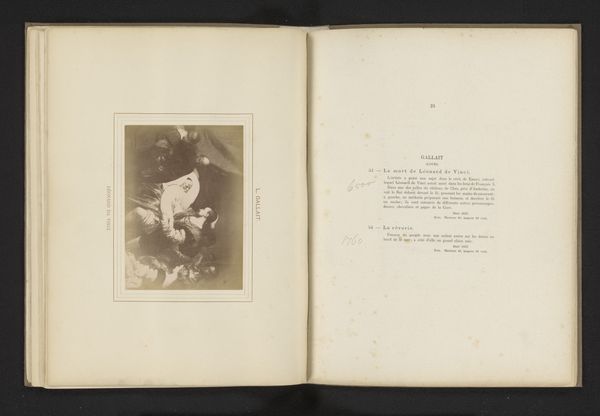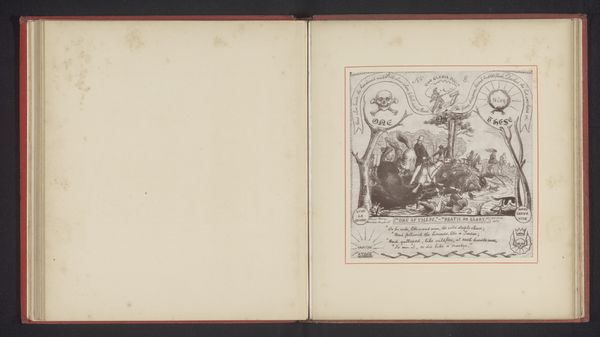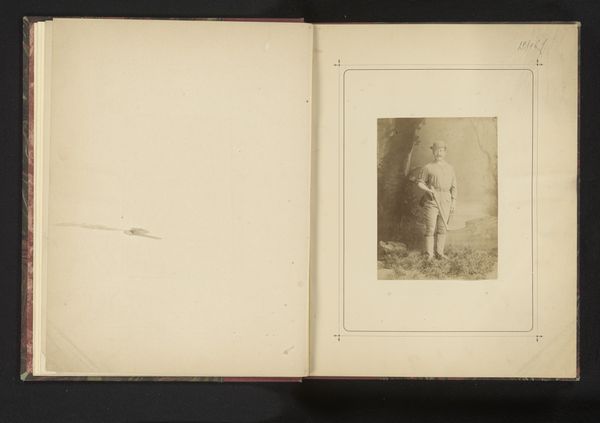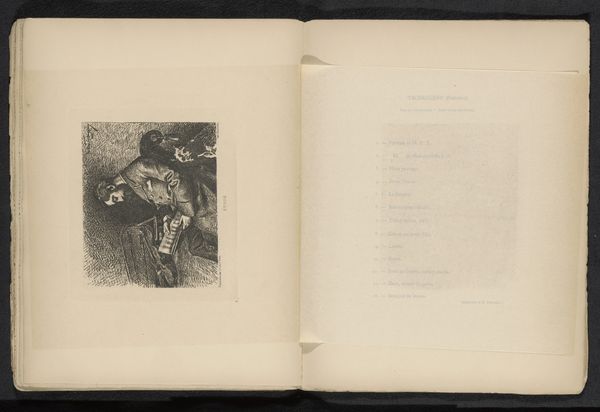
Dimensions: height 232 mm, width 167 mm
Copyright: Rijks Museum: Open Domain
Curator: This engraving by Frederick Hollyer, titled "Saint Christopher in the ford," transports us to a timeless scene. Its creation is dated to before 1885. Editor: It’s quite evocative, isn’t it? The light emanating from the child feels both otherworldly and integral to the composition. The stark black-and-white amplifies that sense of the sacred. Curator: Indeed. Note the expert handling of line and tone. Hollyer uses cross-hatching to build up areas of shadow and texture, effectively simulating the ripples of water and the folds of Saint Christopher’s robes. The print achieves tonal complexity, yet does so in a relatively economic fashion. Editor: Beyond the technique, this piece illustrates the traditional iconography surrounding St. Christopher, often depicted as a giant carrying the Christ Child across a river. In medieval times, images of Christopher were thought to provide protection against sudden death, hence their popularity across Europe. Curator: Precisely. Christopher embodies faith and selfless service, key tenets of Christianity. We observe a synthesis of Christian dogma and Romantic sensibilities regarding pictorial interpretation of sacred ideas. This portrayal is particularly compelling, where both the composition and rendering enhance its narrative. Editor: And consider its public role. Reproductions like this facilitated the dissemination of religious narratives and moral ideals. It's also a statement about the romanticized views of that same narrative during the late nineteenth century. The print operates not merely as a devotional item but a cultural artifact embedded in the aesthetic tastes and belief systems of its time. Curator: Its deliberate archaism creates an aspirational and pedagogical effect, inviting contemplation. The symbolic elements—the staff, the water, and especially the child's nimbus—operate as a complex interplay. The Christ child isn't only at the physical center, he's the light from which all other compositional details proceed. Editor: The cultural function, the formal qualities of the composition... they reinforce the artwork's purpose beyond pure artistry and solidify its role within societal functions and power structures, a mirror reflecting late-Victorian mores and ideals. Curator: A resonant conclusion. Hollyer’s engraving, thus, functions as more than a visual representation of a well-known parable; it is also a testament to the intersections between art, faith, and culture. Editor: Precisely. An artwork brimming with echoes from past and perspectives onto the future.
Comments
No comments
Be the first to comment and join the conversation on the ultimate creative platform.

